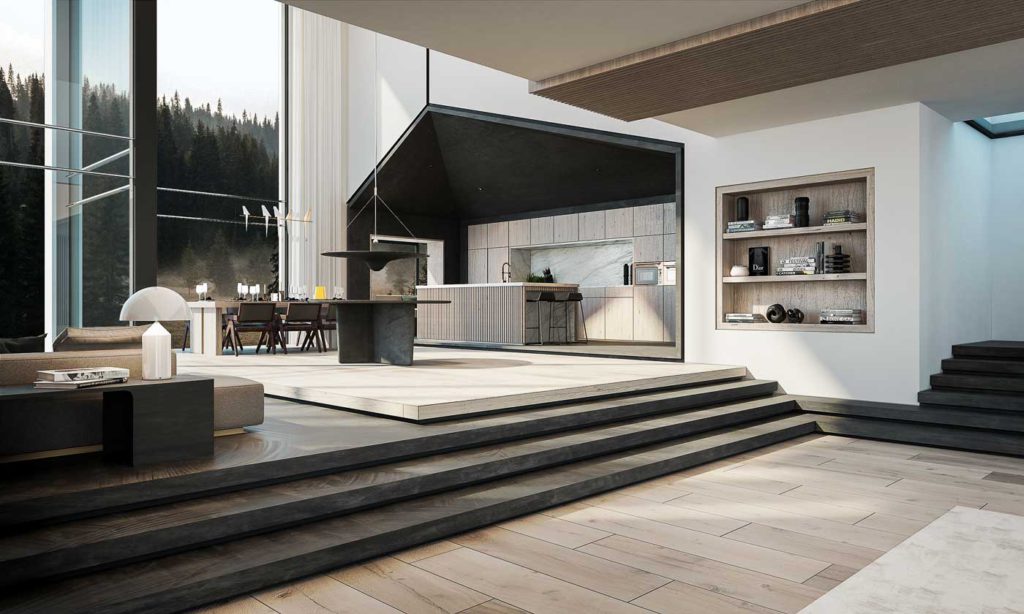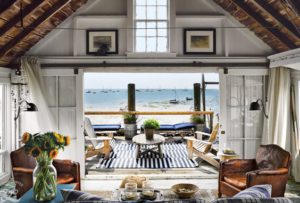Minimalism becomes a common design type

There are many reasons that could be used to explain why there is a rise in popularity of minimalism when thinking of interior design. These include environmental and economic reasons as the younger generations in particular try to move away from the capitalist and consumerism driven society we’ve all been part of for so long. It is also fuelled by evidence that a minimalist lifestyle or a decluttered home can help lead to a healthier and calmer mind – they say that having a cluttered and disorganised living space is indicative of a cluttered and disorganised headspace. This lean towards a minimal design isn’t limited to just traditional homes, this also includes the increased popularity of tiny houses and living in vans. All in all, there is plenty of merit and it is easy to understand the growth of this trend.
By opting for a less is more design style for your home you are also potentially lowering your overall costs and or freeing up funds to invest in more timeless, classic and quality pieces of furniture. For example, rather than having unnecessary excess items that are out of fashion and often go unused (such as ornamental cabinets or product displays), you have the opportunity to spend that excess money on buying a better quality or fancier couch or coffee table. In doing this you are not only allowing yourself a comfier experience you are often saving oodles of money in the long run. When we buy cheaper and mass produced products we often find that they are in fact designed for a short life span, you’ll find that they damage easy and would cost more to fix that they would to replace. If you invest in fewer products of higher quality, it is unlikely you will have to replace them in any great rush and if you do feel that you would like a change, you have a much better chance of getting a tidy sum from any sale you might make.

With so many poor quality goods making their way to landfill on a regular basis people are rethinking their lifestyle choices across the board. We are focused on many ways to improve including compost and recycling through to sustainable sourced and avoiding fast fashion. We’ve realised it is time to change our wasteful ways if we want to see a future we can enjoy. Naturally, as a result, the environment has become a big influencer for many when they are decorating their homes. Opting for well made, second hand pieces of furniture and repairing and modifying the pieces we already own are just a couple of examples of this shift in action. The focus is becoming less about how much we own or how expensive it is and more about how sustainable our choices are. This isn’t strictly limited to furnishings; we could include aspects such as insulation to lowers costs in heating or installing solar panels to increase renewable energy consumption. For many this extends to their basic building material choices too. No longer fuelled soley by which timber colours look the best but also the sustainability of the brand. Also looking to use products such as hardwood primer to increase longevity or facilitate a repair.
There is also an aesthetic appeal to a minimalist design tactic. It gives a sophisticated and a light energy to the home. As many of the younger generations are having less (if any) children the ability to achieve and maintain simplicity is much higher. When there are children running amuck, keeping any kind of décor clean and crisp is well known to be quite the task, not to mention the clutter than inherently comes with having them in the house. Starting with playpens, cribs and highchairs, moving through the 5-times daily toy box dump and into the gadgets and sports equipment, the clutter doesn’t let up until they go out to make their own homes. With all the extra food requirements and personal items to store along with more than just 2 peoples worth of clothes and shoes and other necessities, the traditional family setup makes keeping things simple and minimal somewhat challenging and unappealing.
A knock on from each of the above influences for people to lead a downsized life have led some to decide to take on the task of building a tiny home. Growing in popularity, these designs are often mobile and allow the owner to travel around with their compact home like a turtle. Others are opting for a redone van or bus that tailors to every need they may foresee for an extended nomadic existence. Definitely a different form of minimalism to the idea of sparse furniture and grand wall hangings we might imagine. These variations require precise planning and often very nifty designs to ensure every inch of space is best utilised, yet all household needs are met. With the world being the oyster of travel that it is to so many (especially with the move of so many jobs to remote platforms) it is no wonder that we’re seeing an increase in the capacity, if not the interest, of living the nomadic and therefore minimalist existence.
Some are put off by the minimalist design due to an array of different reasons. It may be harder to achieve with smaller homes as the bare minimum takes up enough space on its own. However, if it can be achieved, it is arguably more favourable to over packing a small space and increasing the perception of less room. Others may be deterred as they suffer from health issues that require larger furniture or industrial equipment such as an air compressor or refrigerated air dryers – don’t let this put you off. Careful placing of these required items alongside well chosen furnishings that conceal or make an ornament of these items can improve the energy or vibe of the room. This along with purposeful colour schemes and wall hangings will allow you to achieve this look no matter your set back. Why not give it a go?








